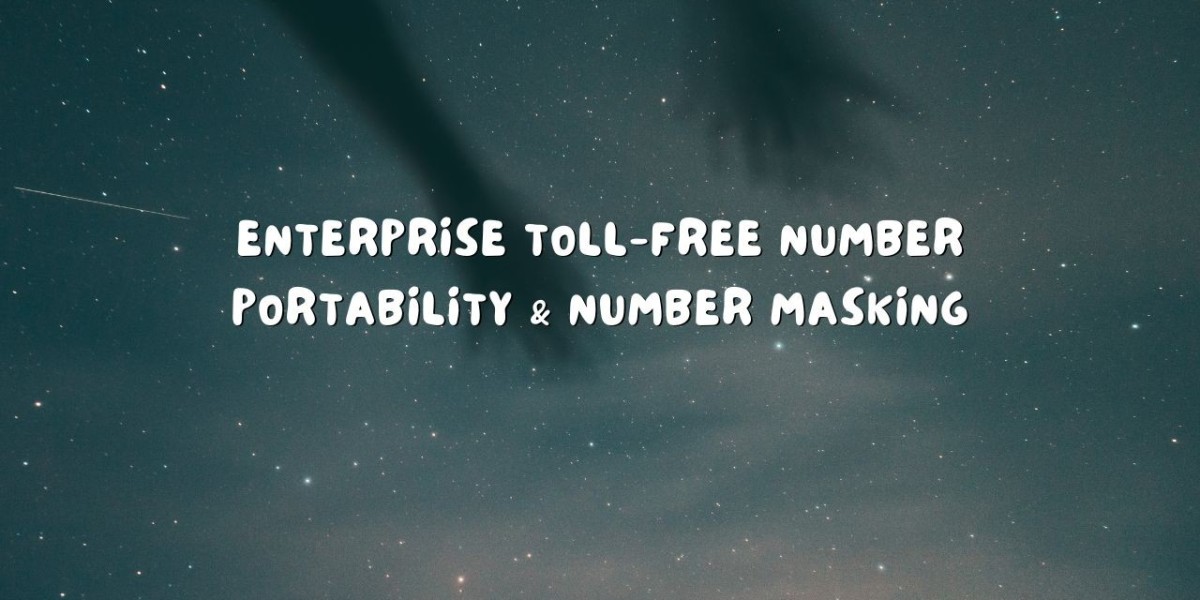For businesses that rely heavily on voice communication, a toll-free number is more than just a contact point—it's a customer service asset, a brand recognition tool, and a vital part of operational infrastructure. But as organizations grow and evolve, the flexibility to move numbers across providers and protect caller identity becomes critical. That’s where enterprise toll free number portability and number masking come into play.
These two capabilities ensure your business remains agile, compliant, and secure while delivering seamless customer experiences.
In this article, we’ll break down the concepts of number portability and number masking in the enterprise context, discuss why they matter, and explore how they can impact your communication strategy.
What Is Number Portability?
Number portability refers to the ability to move a phone number from one service provider to another without changing the actual number. This is particularly crucial for enterprises that have invested years into promoting their toll-free numbers and building customer trust around them.
There are three primary types of number portability:
- Local Number Portability (LNP) – for local geographic numbers.
- Mobile Number Portability (MNP) – for mobile numbers.
- Toll-Free Number Portability – for 1800/1860/800 series toll-free numbers, commonly used by businesses.
For an enterprise, the toll-free number is often printed on marketing materials, embedded in customer portals, and integrated into automated systems. Changing it could lead to a loss of brand identity or customer confusion. Portability eliminates that concern by allowing businesses to retain their number, even when switching to a different telecom provider or cloud telephony service.
Benefits of Toll-Free Number Portability
Here’s why number portability is increasingly becoming a must-have feature for enterprise communication:
1. Freedom to Choose the Best Provider
Switching carriers often means better pricing, improved call quality, or more robust support. With portability, you’re not locked into a subpar service just because of your toll-free number.
2. Reduced Downtime
During a transition, number portability ensures your services aren’t interrupted. Most service providers offer a phased or mapped transition, so there's no disruption to incoming calls.
3. Cost-Efficiency
Carriers may offer reduced rates or bundled services for migrated numbers. Also, retaining the same number means you don’t need to reprint marketing material or rebrand your digital assets.
4. Better Negotiating Power
When you're not tied to one carrier, you’re in a better position to negotiate rates and service levels.
What Is Number Masking?
While portability gives you control over your number, number masking provides privacy and security. Number masking is a technique used to hide a caller’s real phone number, replacing it with a temporary or proxy number during communication. It’s widely used in ride-sharing, food delivery, logistics, customer service, and telehealth platforms.
For example, when a customer calls a delivery agent, neither party sees the other's real number. Instead, both see a masked number facilitated by a cloud telephony service. This protects personal data while still enabling real-time communication.
Why Enterprises Need Number Masking
1. Protect Customer Privacy
With rising concerns around data privacy, masking ensures that customer numbers are never exposed to agents, drivers, or support staff unnecessarily.
2. Regulatory Compliance
Regulations like GDPR, CCPA, and India's DPDP Act encourage organizations to safeguard personally identifiable information (PII). Number masking supports this goal.
3. Enhance Trust
When customers know their data is protected, it builds trust in your brand. In industries like healthcare or banking, this can significantly impact loyalty.
4. Monitor and Control Interactions
Using virtual numbers also enables tracking and recording of calls, making it easier to ensure service quality and accountability.
How Portability and Masking Work Together
Though number portability and masking serve different purposes, together they form a strategic communication layer for enterprises.
Let’s say you want to switch your communication service provider for better pricing but keep your toll-free number. With portability, that’s possible. Then, you want to ensure customer-agent calls are protected—number masking makes that happen. The result is a unified system where your enterprise toll free number remains consistent and your users’ privacy is fully protected.
Some cloud telephony platforms offer both features under one dashboard. These systems can route calls via virtual numbers, log interactions, and support real-time analytics. Such solutions are especially useful for call centers, e-commerce businesses, and on-demand service apps.
Implementation Considerations
Before jumping in, here are a few things to keep in mind:
1. Check Portability Eligibility
Not all toll-free numbers are eligible for portability. Ensure your current provider supports number release and that the new provider can accept the port-in request.
2. Documentation and Timeline
Porting usually requires business verification documents, authorization letters, and a lead time of a few days to weeks. Plan accordingly to avoid service disruption.
3. Evaluate Masking Options
Ask if the new provider offers dynamic number masking, SMS masking, or call recording with masking. The features you need may vary by use case.
4. Integration
Ensure both portability and masking can integrate with your existing CRM, helpdesk, or mobile app infrastructure.
Real-World Use Cases
Let’s look at a few industries where these features have become business-critical:
- E-Commerce: Number masking protects customer-agent interaction during returns or order issues.
- Logistics: Delivery personnel use virtual numbers to call customers without exposing personal data.
- Healthcare: Toll-free numbers are often ported to cloud systems for 24/7 appointment and emergency support, while masking ensures patient confidentiality.
- BFSI (Banking & Finance): Toll-free customer helplines are ported for better control and are combined with masking to prevent fraud or phishing.
The Future of Enterprise Communication
As enterprises continue to digitize and decentralize, flexibility and privacy are no longer optional—they’re expected. Toll-free number portability ensures you're not tied to legacy systems or expensive service contracts, while number masking safeguards user identities in an era where data leaks are reputational disasters waiting to happen.
Whether you're a startup scaling rapidly or a legacy enterprise modernizing operations, your enterprise toll free number should be future-ready—easy to move, integrate, and secure. Together, number portability and masking give you that edge.







